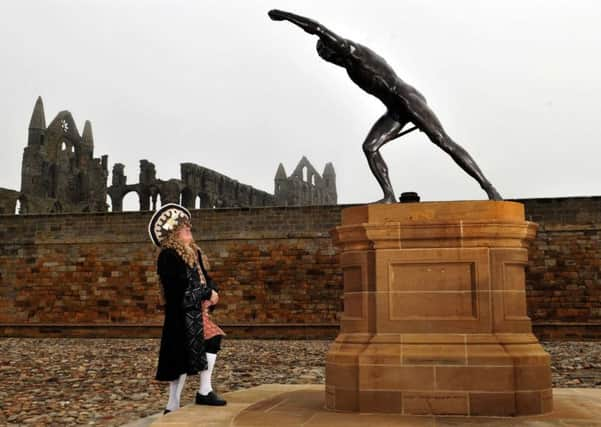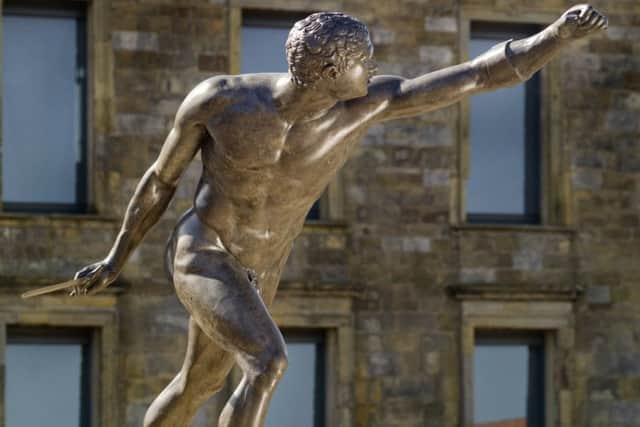Whitby's Borghese gladiator is a classical masterpiece


In 1682, the Leeds antiquarian Ralph Thoresby described the new house at Whitby Abbey built by Sir Hugh Cholmley II as: ‘a most delicate and stately hall, supposed to be exceeded by few in England for the bigness of it, … the hall is of freestone, with large courts and walks with iron grates, and a curious statue in solid brass as large as life in the midst of the square, with a delicate bowling green, gardens, etc., which are extremely pleasant’
Map evidence from the late 18th century show a statue at the centre of the court in front of Cholmley’s house and both appear to show a leaning figure similar to the thrusting attitude of the Borghese type.


Advertisement
Hide AdAdvertisement
Hide AdArchaeological evidence for the presence of a statue in the centre of the court was revealed during excavations which took place between 1998-2002 where the cobbled court in front of the house was uncovered and it was noted that there was a rectangular area at the centre of the court where cobbles were absent. This feature was interpreted, based on the map evidence, as the site of the base plinth and pedestal of a statue.
In recent conservation works to the courtyard surface, the missing plinth has been restored.
Reviewing the documentary map and archaeological evidence, experts at English Heritage reached the conclusion that the most likely model for the Whitby statue would be the Borghese gladiator, now in the Louvre, Paris.
The original antique marble statue of the gladiator entered cardinal Borghese’s collection soon after its discovery in 1611 at Nettuno, near Anzio, on the Mediterranean coast south of Rome. It remained at the Villa Borghese, Rome, until 1807 when it was purchased by Napoleon Bonaparte, brother-in-law to Prince Camillo Borghese.
Advertisement
Hide AdAdvertisement
Hide AdKing Charles I took a leading role in establishing the taste for classical sculpture in England. In 1631, he commissioned the French sculpture Hubert Le Sueur to travel to Italy and within two years, le Sueur had cast six bronzes, which where put on display in the privy garden at St James’s Palace. The bronzes included a copy of the Borghese gladiator and for those interested in following royal taste the gladiator was to have a particular fascination.
The Borghese gladiator is a dynamic figure that demonstrates a remarkable understanding of anatomy and its popularity has not waned in the four centuries since its rediscovery. Acknowledged as a masterpiece of classical sculpture, its association with Charles I, no doubt, led Cholmley to include a copy of the gladiator at the centre of his court d’honneur. His choice reflects his aspirations to the royal court and his family’s vigorous role in defending the monarchy during the Civil War.
The restoration of the statue restored a degree of human interest to the much depleted Cholmley House (now the visitor centre) and reflected the family’s active role in Whitby’s history and fill a vacuum at the heart of a fascinating 17th Century landscape.
Works to the English Heritage managed site started on November 5 with the site due to re-open in spring of 2019.